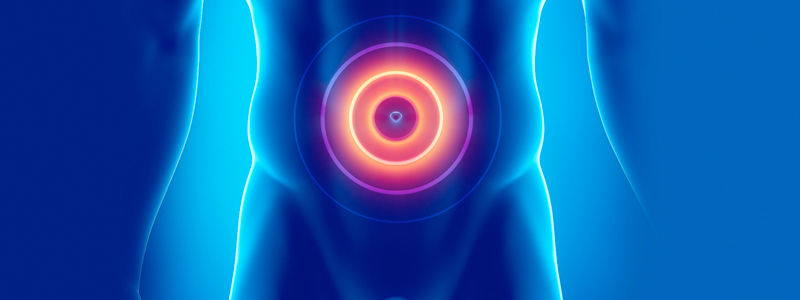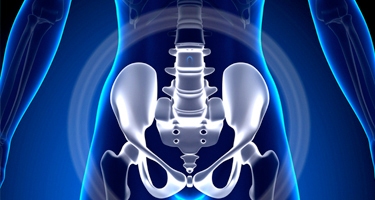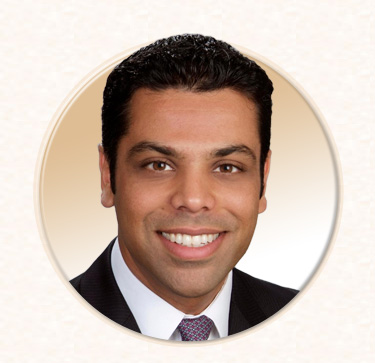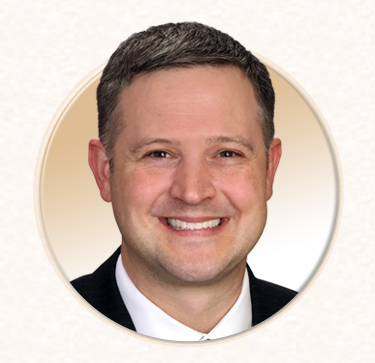Hernia Surgery

What is a Hernia?
A hernia occurs when an abdominal organ, usually the small intestine, protrudes through the abdominal wall. The protruding tissue may become obstructed or incarcerated, or may strangulate. In the latter case, blood flow to the tissue is impeded and the results may be life-threatening. Hernias do not heal on their own and may be uncomfortable or painful. Surgery is the only method to correct them. Small hiatal hernias, however, can sometimes be kept at bay through diet and medication. Among the most common procedures in the United States, hernia surgery is performed to push the protruding tissue back into place and repair the weakness in the abdominal wall which allowed it to pass through.
Types of Hernia
There are several types of hernias, differentiated by their locations in the body as follows:
- Inguinal or femoral hernias, in the groin, upper thigh, scrotum or labia
- Umbilical or navel hernias, in the region of the navel.
- Incisional hernias, at the site of a previous surgery.
- Hiatal hernias, in the diaphragm
The first three types of hernia present as visible bulges, while hiatal hernias are not visible or palpable.
Causes of Hernia
Hernias have a variety of causes. They may be congenital defects or may result from a congenital weakness in the abdominal wall exacerbated over time. Hernias may be more likely to form because of:
- Family history of hernias
- Obesity
- Chronic cough due to smoking or disease
- Pregnancy
- Constipation
- Straining to urinate
- Enlarged prostate
- Undescended testicles
- Ascites, the buildup of abdominal fluid
- Certain medical conditions, like Marfan syndrome
- Weakened abdominal muscles due to poor nutrition or heavy lifting
Symptoms of Hernia
Depending on the location of the hernia, symptoms will vary. Abdominal hernias may be tender or painful to the touch and the patient may experience increased pain when lifting, coughing, or straining at urination or bowel movements. An abdominal hernia may seem to disappear at times when the protruding tissue is pushed back inside the abdominal wall. Once the weakness in the abdominal wall exists, however, the bulge of the hernia will inevitably reappear.
In the case of hiatal hernias, the symptoms are those of indigestion and may include heartburn; regurgitation, difficulty swallowing, bloating or shortness of breath.
Although a patient with an abdominal hernia may be asymptomatic, once a hernia is discovered through physical examination, it must be dealt with. In the case of small hernias, the doctor may opt to just keep a careful watch, but in the event that the hernia is large or in the process of enlarging, surgery will be necessary.
Diagnosis of Hernia
An abdominal hernia is frequently diagnosed through physical examination, but confirming diagnostic tests are often run, particularly when the patient is obese and physical examination if inconclusive. Such diagnostic tests may include abdominal X-rays or ultrasound. When a hiatal hernia is suspected, the patient may undergo an upper endoscopy, a barium swallow or an esophageal manometry or pressure study. Blood tests may also be required.
Treatment of Hernia
To repair a hernia of any type surgery is necessary. Surgery is usually recommended when hernias are large or are interfering with the patient's normal activities, but may also be undertaken prophylactically to prevent the danger of future incarceration or strangulation. When strangulation occurs and blood flow is cut off to the patient's tissue, that tissue begins to die and gangrene is a possible consequence. Once this happens, emergency surgery is required.
There are two major types of hernia surgery, both performed under general anesthesia:
Laparoscopy
Laparoscopic hernia surgery is minimally invasive. In this type of procedure, the surgeon makes several small incisions. As a result, laparoscopy results in less scarring, less bleeding, less pain, and a shorter recovery time, usually 1 to 2 weeks.
Open Surgery
While there are significant advantages to laparoscopic hernia surgery, there are some patients for whom such surgery is contraindicated. If the patient is obese, or if there is extensive scar tissue left from a previous surgery, the surgeon may have to do an open procedure requiring a deeper incision and a longer recovery time, usually about 6 weeks.
Risks of Hernia
While hernia surgery is one of the most common surgeries performed, and although the success rate for this procedure is extremely high, there are always risks with any surgery. Some of the possible complications are listed below:
- Excessive bleeding
- Blood Clots
- Adverse reactions to anesthesia or medications
- Post-surgical infection
- Damage to adjacent organs
- Breathing problems
Recovery from Hernia Repair Surgery

Some rest is required after any hernia repair surgery, and there is some pain, but recovery usually goes quite smoothly. Within a week or two after most hernia repairs, the patient can return to a normal schedule.
In the case of abdominal hernias, the patient must refrain from strenuous activity or heavy lifting for 4 to 6 weeks or until healing is complete. Patients recovering from hiatal hernia repair are usually advised to eat small portions and to stick to a soft diet for several days. Any residual digestive problems these patients experience, such as loss of appetite, bloating or increased flatulence, commonly resolve over a short period of time.
For all hernia repair patients, the area at the incision site will be tender, especially for the first week. During this time, the incision should be protected during activity that increases abdominal pressure. The patient should apply firm but gentle pressure on the incision line when coughing, sneezing, vomiting, or bearing down during a bowel movement.
Complex Hernias
Complex hernias are hernias that recur after surgical repair, or even after multiple repairs. A hernia occurs when tissue or part of an organ protrudes through the abdominal wall. During surgical repair, the abdominal wall is reinforced at its weak point to prevent recurrence of the problem.
Because scar tissue develops at the repair site, however, if the area re-herniates, each successive surgery becomes more difficult and is less likely to be successful. Complex hernias may also be associated with further complications, including infections, bowel perforations, or fistulas, where an abnormal attachment is formed between two organs.
Reasons for Complex Hernias
Complex hernias may be caused by inadequate surgical repair of the original hernia or may result from the same events that caused the original hernia, such as:
- Strenuous exercise
- Increased pressure within the abdomen due to accumulation of fluid
- Straining during bowel movements or urination
- Heavy lifting
- Pregnancy
- Excessive weight gain
- Chronic coughing or sneezing
- Abdominal injury or post-surgical complications
Types of Complex Hernias
Unfortunately, any type of hernia may recur. Types of hernia include:
- Abdominal hernia
- Pelvic hernia
- Inguinal hernia
- Incisional hernia
- Hiatal hernia
- Umbilical hernia
Complex Hernia Repair

Complex hernias require surgical repair. Since hernias repaired by pulling tissue together and suturing it have a greater rate of recurrence than those repaired using surgical mesh, repair of complex multiple recurrent hernias usually utilizes the latter technique. Modern tension-free mesh repair generally results in a better surgical outcome. Sometimes a biologic mesh graft, created from human or animal sources, may be used because it offers resistance to infections.
Surgical hernia repairs may be done with open surgery or laparoscopically. Where laparoscopic surgery is possible, it is a much less invasive procedure, requiring smaller incisions and resulting in less pain, less scarring, and a shorter recovery period.
Risks of Complex Hernias
Hernias, particularly when they have recurred, do not resolve on their own. In fact, they tend to grow larger and more problematic over time, causing more swelling and pain. There is also the danger that an untreated hernia may incarcerate, where tissue becomes trapped in the hernia, or strangulate, in which case blood flow to organs is impeded. Either of these situations is a medical emergency.
Our Surgeons Specializing in Hernia Repair Surgery

- Allen Agapay, MD
- General Surgeon
- Peoria
- Learn More

- Nathan Bodily, MD
- General Surgeon
- Gilbert & Mesa
- Learn More

- Ravia Bokhari, MD, FACS
- General Surgeon
- West Phoenix
- Learn More

- Maria Brown, MD
- Fellowship Trained Bariatric & Foregut Surgeon
- Mesa
- Learn More

- Charles Castillo, MD, FACS
- General Surgeon
- Central Phoenix
- Learn More

- Susan Cortesi, MD, FACS
- General Surgeon
- Mesa & Scottsdale
- Learn More

- Lawrence Damore II, MD, FACS
- General Surgeon
- Mesa & Gilbert
- Learn More

- Jordan Glenn, DO, FACS
- General Surgeon
- Peoria
- Learn More

- Rita Hadley, MD, FACS, PhD
- General & Bariatric Surgeon
- Mesa
- Learn More

- Theodore Haley, MD, FACS
- General Surgeon
- Gilbert
- Learn More

- Richard Harding, MD, FACS
- General Surgeon
- Central Phoenix
- Learn More

- Sumeet Kadakia, MD, FACS
- General Surgeon
- Gilbert
- Learn More

- Jon King, MD, FACS
- General Surgeon
- West Phoenix
- Learn More

- Daveshni Kumar, MD, FACS
- General Surgeon
- Mesa & Scottsdale
- Learn More

- Matthew Marini, MD, FACS
- General Surgeon
- Gilbert & Mesa
- Learn More

- Kevin Masur, MD, FACS
- General Surgeon
- Mesa & Scottsdale
- Learn More

- Richard Oh, MD, FACS
- General Surgeon
- Gilbert
- Learn More

- Karthik Raghavan, MD, FACS
- General Surgeon
- Glendale
- Learn More

- Jennifer Reitz, MD, FACS
- General Surgeon
- Gilbert
- Learn More

- Greg Rula, MD, FACS
- General Surgeon
- Mesa
- Learn More

- David Smith, MD, FACS
- General Surgeon
- West Phoenix
- Learn More

- Craig Szafranski, MD, FACS
- General Surgeon
- Mesa
- Learn More

